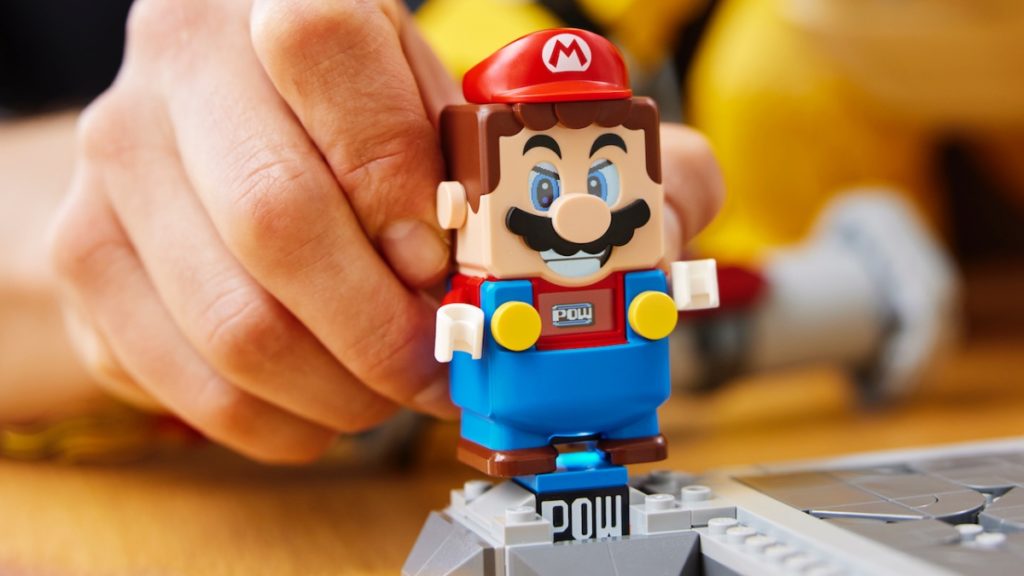LEGO pulls back the curtain on its secret ideas lab: ‘We try to prove ourselves wrong’
Take a rare peek into the LEGO Group’s secret lab responsible for dreaming up the next generation of toys – and learn why the rapidly-growing team is so focused on failure.
While the LEGO Group happily wheels out designers for new product launches, the people in charge of assembling its latest sets are only one part of the equation. Deep in the halls of LEGO Campus in Billund sits the Creative Play Lab, a team of people (rather than a physical space) working on the next big thing for the LEGO Group and its audience.
“The way I think about us is as a discovery organisation,” Tom Donaldson, the LEGO Group’s senior vice president and head of Creative Play Lab, told Inc. “When we need to discover something new that the audience wants, when we need to discover a new way to play, or, when we need to discover how to make technology do what it’s supposed to do, that’s where Creative Play Lab comes in.”

When Donaldson first joined the LEGO Group eight years ago to head up Creative Play Lab, his team consisted of just 30 people. It now spans 250 employees – and he’s expecting it to grow by a further 17% over the next couple of years, as the company pours more and more resources into coming up with technology-driven projects like LEGO Super Mario and the upcoming smart brick.
The team comprises engineers, futurists, computer scientists and video game designers, and there are currently openings for electrical engineers and user-interface designers at LEGO offices around the world. But underpinning everything they do is a desire to ‘discover what is needed for us to be relevant to kids and other audiences in the future’, Donaldson explained.
Idea generation stands at the core of that process, and those innovations come from both ‘top-down and bottom-up’. “We need to have some senior strategic thinkers looking at the trends, looking at the insights, and making sort of big strategic decisions about where they see the audience going,” Donaldson said, before noting that those higher-ups are ‘very good at listening’ when individuals come forward with their own ideas.

Part of taking those ideas seriously is giving people budgets to work with, and the company’s head of interactive innovation Sam Coates says that the LEGO Group is happy to invest resources and capital into trying new things, because that’s where the best ideas come from. But you don’t arrive at a winning idea on day one – and that’s where the Creative Play Lab’s extremely thorough testing comes into play.
“We take assumptions, and we challenge, and we poke, and we try and prove ourselves wrong,” Coates explained. When they’re testing products, the team isn’t looking for what works, but what doesn’t. “If I’m going in to find all the things that work, then I’m just going to ignore the problem. We’re looking for what the rough bits are, so we can polish them out, and we’re looking for the small failures.”
Given the Creative Play Lab is all about big ideas, its testing process is not what you’d call intimate. The team has expanded beyond Billund to allow kids to play unsupervised in their own homes (‘it’s 1,000 children’s homes every time’, according to Coates). And that isn’t easy: not only are there confidentiality factors at play, but the LEGO Group also has to figure out how to manufacture its test products on a relatively small scale within its traditionally much larger supply chain.

Even still, the team says it’s an essential piece of the puzzle that won’t change any time soon. “We’ve discovered, every time, things that you would never have found until a bad review start to show up,” Coates added. “So that’s become part of the Creative Play Lab process now, and I would never go to market without doing at least one round.”
No matter how much time and energy the engineers and scientists within the Creative Play Lab spend on an idea, it’s not until the product is in the hands of kids that they can really see whether it’s working, because kids are unpredictable. “One of the things we see time and time again is what you think kids are going to love is different [from] what they actually love,” Donaldson said.
“Quite often, one of the most telling signs is if [kids] start doing something else than what we’re testing,” added LEGO Super Mario’s senior design manager and digital lead Anders Antoft Schou. “We’re like, ‘Okay, interesting.’”

While Donaldson and Coates are naturally holding most of their cards close to their chest – LEGO Super Mario was in development for five years before hitting shelves, and the team is currently plotting the next 10 years of LEGO play – the core tenet underpinning their work is finding new avenues for growth within a toy market that has slowed significantly over the past few years.
In short: watch this space. The future of LEGO could look very different to what’s on shelves today.
Support the work that Brick Fanatics does by purchasing your LEGO using our affiliate links.
Author Profile
- I like to think of myself as a journalist first, LEGO fan second, but we all know that’s not really the case. Journalism does run through my veins, though, like some kind of weird literary blood – the sort that will no doubt one day lead to a stress-induced heart malfunction. It’s like smoking, only worse. Thankfully, I get to write about LEGO until then.
Latest entries
August 2024 sets28/06/2024LEGO Star Wars 75392 Creative Play Droid Builder price confirmed, pre-orders open
News28/06/2024First look at LEGO 40706 Micro NINJAGO City Markets Insiders reward
10332 Medieval Town Square28/06/2024More than 400 new LEGO pieces coming to Pick a Brick in July, including the goat
July 2024 sets28/06/2024LEGO 40689 Firework Celebrations GWP available now – but Jules Verne vanishes





